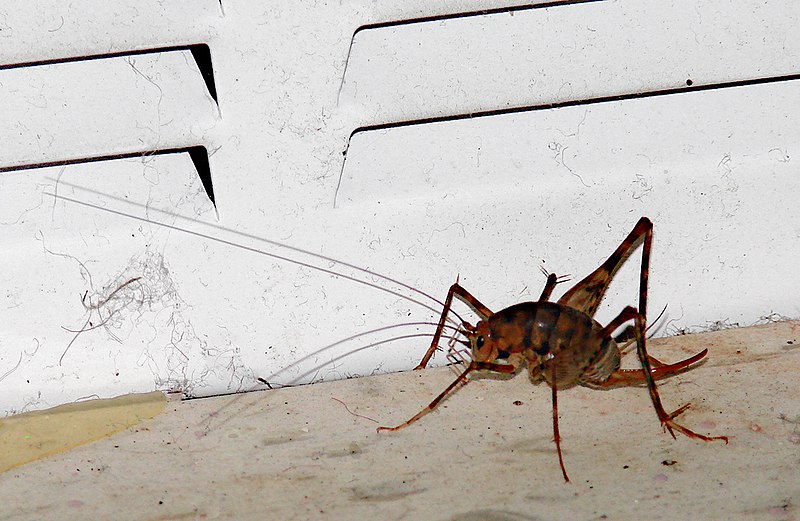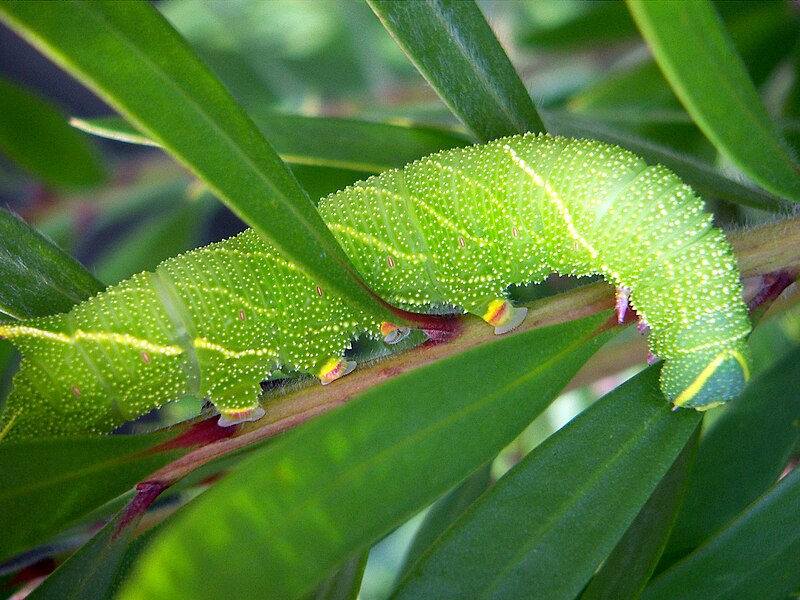Vacation feeders and “toys” for turtles…reptile care supplies certainly have come a long way since I started on my pet care and zoo-keeping career! Today I’d like to highlight two new automatic feeders designed especially for turtles (I believe both will be useful for African Clawed Frogs, Mexican Axolotls, newts and larger fishes as well). Exo Terra’s Automatic Feeder represents a great step forward in turtle care, allowing for 4 daily feedings of different foods over an extended period of time. The Zoo Med Floating Turtle Feeder, while not technically a “toy”, will keep you and your turtles entertained. Similar to behavioral enrichment tools and activities I employed at the Bronx Zoo, this feeder forces turtles to “work” for their meals, thereby encouraging activity and foraging behaviors. Read More »
Tag Archives: feeding amphibians
Feed SubscriptionCrickets and Carotenoids – Study Examines Cricket Nutrient Levels
 Captive insect-eating reptiles and amphibians (and perhaps invertebrates) are often plagued by nutritional deficiencies. A highly-varied diet is a great way to ensure adequate nutrition, but most keepers have access to only a few feeder-insect species; gut-loading (providing nutritious diets to feeders) is helpful, but detailed studies are lacking. While touring several Japanese zoos a few years ago, I was intrigued by the number of cricket species being bred as herp food, and resolved to investigate the species and diets I saw in greater detail. A recent article in Zoo Biology (2011, V. 30), which provides insights into carotenoid supplementation in three different cricket species, has re-sparked my interest. I’ll summarize below.
Captive insect-eating reptiles and amphibians (and perhaps invertebrates) are often plagued by nutritional deficiencies. A highly-varied diet is a great way to ensure adequate nutrition, but most keepers have access to only a few feeder-insect species; gut-loading (providing nutritious diets to feeders) is helpful, but detailed studies are lacking. While touring several Japanese zoos a few years ago, I was intrigued by the number of cricket species being bred as herp food, and resolved to investigate the species and diets I saw in greater detail. A recent article in Zoo Biology (2011, V. 30), which provides insights into carotenoid supplementation in three different cricket species, has re-sparked my interest. I’ll summarize below.
Carotenoids
Carotenoids are pigments that occur in plants. Animals, as far as is known, cannot manufacture carotenoids but rather must obtain them through their diet.
Carotenoids benefit the immune system by acting as antioxidants, function in the reproductive and other systems, and are believed partially responsible for the health benefits enjoyed by people who regularly consume fruits and vegetables. We know little of their role in reptile and amphibian health, but many zoo nutritionists believe them to be important. Read More »
Pet-Safe Cricket and Roach Control for Reptile and Amphibian Owners
 Almost every zoo building in which I’ve worked was home to roach (2-3 species) and House Cricket populations. In most, pesticide use was not an option. An older animal keeper whom I befriended let me in on his favorite insect pest control technique – the molasses trap. He was content to let management wonder how he did such a good job so, out of respect for him, I did not share the secret until he retired. Then, for a time, molasses traps became standard in several zoo buildings. Molasses is also useful in outdoor traps, where it never fails to turn up a variety of interesting species. I’ll expand on that below as well.
Almost every zoo building in which I’ve worked was home to roach (2-3 species) and House Cricket populations. In most, pesticide use was not an option. An older animal keeper whom I befriended let me in on his favorite insect pest control technique – the molasses trap. He was content to let management wonder how he did such a good job so, out of respect for him, I did not share the secret until he retired. Then, for a time, molasses traps became standard in several zoo buildings. Molasses is also useful in outdoor traps, where it never fails to turn up a variety of interesting species. I’ll expand on that below as well.
Pesticide Problems
House Crickets, roaches and other escaped “feeder insects” can be problematic in private collections. In the damp basements favored by amphibian keepers, Spotted Camel Crickets (Ceuthophilus maculatus, please see photo) may also set up housekeeping. These unusual creatures are very interesting in their own right, and I’ve featured them, and a large African relative, in several exhibits. However, most folks find their size, appearance and jumping abilities quite unsettling (please see comments in the article linked below – insect fans will find them very interesting!). Read More »
Live Food Care – Reptile, Amphibian, Tarantula and Scorpion Diets
 I’ve covered a number of less-commonly kept food animals in this care guide, along with pet trade staples. Please consider as many as you can, as dietary variety is critical to the health of most pets. The extra effort on your part will be very worthwhile…novel foods also inspire enthusiastic feeding responses, and may even stimulate reproduction.
I’ve covered a number of less-commonly kept food animals in this care guide, along with pet trade staples. Please consider as many as you can, as dietary variety is critical to the health of most pets. The extra effort on your part will be very worthwhile…novel foods also inspire enthusiastic feeding responses, and may even stimulate reproduction.
There is an endless supply of useful live foods, so please post your ideas and observations.
Earthworms, Red Wigglers, Nightcrawlers (Lumbricus terrestris, others)
I’d like to see earthworms replace crickets as dietary staples for those species that accept them. Highly nutritious, they are readily taken by most amphibians and turtles, some lizards, insectivorous snakes, and tarantulas. Most reproduce rapidly when kept in a screen-covered plastic container with alternating layers of dead leaves and moist topsoil; they can also be stored under refrigeration. Keep earthworms at 70 F or below if possible (certain species tolerate warmer temperatures). Read More »
Hatching Praying Mantid Egg Cases to Feed Tiny Amphibians and Invertebrates
 Dietary variety is the key to success in rearing many herps and invertebrates. Unfortunately, options for newly-transformed frogs and salamanders, Poison Frogs and other small species and hatchling spiders are limited. A diet of fruit flies, springtails and pinhead crickets sometimes suffices, but as I learned when rearing the endangered Kihansi Spray Toad, other foods are often necessary. Praying Mantid Egg cases (properly termed “oothecum”), which may be collected or ordered from commercial dealers, are a useful but under-appreciated resource for those who keep small insectivorous pets.
Dietary variety is the key to success in rearing many herps and invertebrates. Unfortunately, options for newly-transformed frogs and salamanders, Poison Frogs and other small species and hatchling spiders are limited. A diet of fruit flies, springtails and pinhead crickets sometimes suffices, but as I learned when rearing the endangered Kihansi Spray Toad, other foods are often necessary. Praying Mantid Egg cases (properly termed “oothecum”), which may be collected or ordered from commercial dealers, are a useful but under-appreciated resource for those who keep small insectivorous pets.
Foreign Mantids in the USA
The 2 most-commonly encountered mantids (or mantises) in the USA are both introduced (not native). The largest and most widespread is the Chinese Mantid, Tenodera aridifolia sinensis, brought here in 1896 to battle insect pests. The European or Praying Mantid, Mantis religiosa, arrived as a stowaway around the same time. They and the world’s other 2,400+ species, consume vast numbers of beneficial and harmful insects…in fact, a single Chinese Mantid may consume 20,000 or more insects in its lifetime! Read More »
 That Reptile Blog – Reptile, Amphibian and Exotic Pet Care and Information
That Reptile Blog – Reptile, Amphibian and Exotic Pet Care and Information
